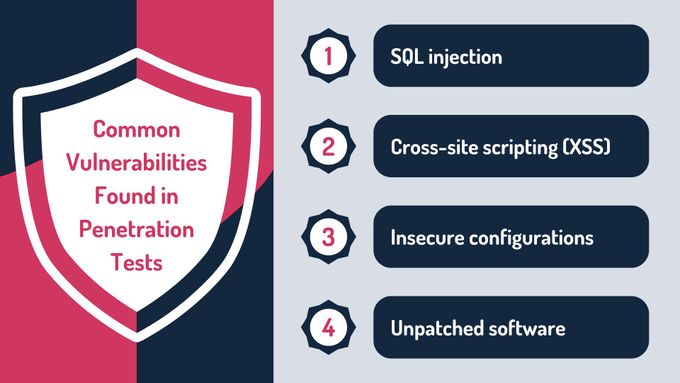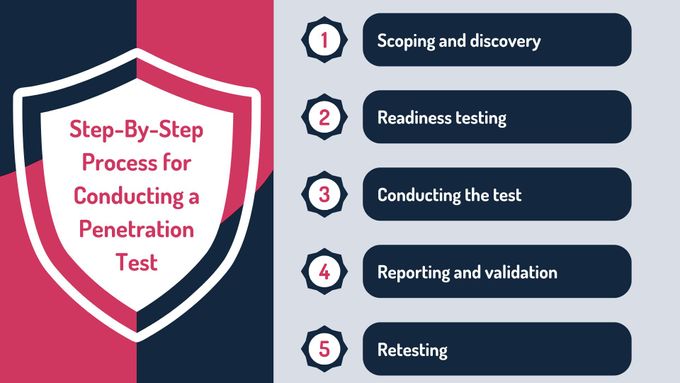What Is Penetration Testing and How Does It Fortify Your Cybersecurity?
Unlike other security assessments, which may only highlight potential weaknesses, penetration testing actively attempts to exploit vulnerabilities to determine their severity and potential impact.
Published April 5, 2025.

As an increasing number of businesses rely on digital platforms, cybersecurity has become an essential priority. The risk of cyber threats continues to rise as cybercriminals are constantly changing their tactics and finding new ways to exploit vulnerabilities and breach systems. In fact, 2023 had a 20% increase in data breaches from 2022, leading to massive financial losses and reputation damage.
Therefore, proactive security measures are no longer optional, they're a necessity. One of the most effective tools in a cybersecurity strategy is penetration testing, which helps organizations identify and address vulnerabilities before they can be exploited.
» Let the experts handle your penetration testing needs with our startup and enterprise services
What Is Penetration Testing?
In simple terms, the primary goal of penetration testing (pentesting) is to identify vulnerabilities that could be exploited by malicious actors and what the consequences would be by simulating real world attacks on a system, application, or network's defenses, including firewalls, encryption methods, and authentication mechanisms.
Unlike other security assessments, which may only highlight potential weaknesses, pentesting actively attempts to exploit vulnerabilities to determine their severity and potential impact. By simulating an attack, penetration testing can provide valuable insights into the effectiveness of security measures, helping them understand how well they are protected against real threats.
The results of a penetration test can then be used to:
- Strengthen security measures
- Identify and fix vulnerabilities
- Enhance the overall resilience of the infrastructure
- Showcase reliability to help you gain customer and partner trust so they are more likely to conduct business with you
Types of Penetration Tests
Black Box Testing
In black box testing, the tester is given no prior knowledge of the system. This simulates an attack from an external hacker with no insider information. The tester then identifies and exploits potential vulnerabilities without initial access or knowledge, making it a highly realistic simulation of an external attack.
White Box Testing
White box testing provides the tester with full access to the system, including internal documentation, source code, and architecture. This type of testing allows for a thorough examination of the system, as the tester can explore the entire environment and understand how different components interact. White box testing is often used to assess the security of internal systems and applications.
Gray Box Testing
Gray box testing is a hybrid approach where the tester has some knowledge of the system, such as access credentials, but not full access like in white box testing. This method is commonly used to test web applications and other systems where the tester needs to understand some internal workings to effectively test for vulnerabilities. Gray box testing strikes a balance between thoroughness and efficiency, offering a realistic assessment while saving time on information gathering.
» Learn more: The different kinds of penetration tests
Common Vulnerabilities Found in Penetration Tests
SQL injection: This vulnerability occurs when an attacker is able to insert malicious SQL code into a query, potentially gaining access to the database and sensitive information. SQL injection is a common and dangerous vulnerability that can lead to significant data breaches if not properly mitigated.
Cross-site scripting (XSS): XSS vulnerabilities allow attackers to inject malicious scripts into web pages viewed by other users. This can lead to the theft of cookies, session tokens, or other sensitive information, as well as the manipulation of web content.
Insecure configurations: Misconfigurations in systems, such as using default passwords or leaving unnecessary services enabled, are a frequent finding in penetration tests. These vulnerabilities can provide easy entry points for attackers if not addressed.
Unpatched software: Failing to apply security patches promptly can leave systems vulnerable to known exploits. Penetration testers often find that outdated software is a weak link in an organization's security chain.
Of course, this list of possible vulnerabilities is not set in stone, and typically differs from company to company. To learn more about the full list of weaknesses and vulnerabilities found by pentesting, consider checking out the OWASP Top 10 list, which covers the 10 most common vulnerabilities and how to mitigate them.
» Did you know? The cloud might not be safe anymore
Conducting a Penetration Test: Step-By-Step Process
Scoping and discovery: The first step is to define the scope of the test to ensure that it will be focused and relevant, including which systems and assets will be tested. This phase involves discussions with the client to understand the critical areas of their infrastructure and the specific threats they are concerned about.
Readiness testing: Before the actual test begins, a readiness test is conducted to ensure that all necessary information and access are available. This includes verifying that test accounts are set up, credentials are provided, and the environment is ready for testing. The readiness test helps prevent delays and ensures that the penetration test can proceed smoothly.
Conducting the test: During the testing phase, the penetration tester attempts to exploit identified vulnerabilities to assess their impact. This phase involves a combination of automated tools and manual techniques to simulate attacks. The tester may try to gain unauthorized access, escalate privileges, or exfiltrate data to determine the severity of the vulnerabilities.
Reporting and validation: After the test is completed, a draft report is issued to the client, detailing the findings. This report includes an executive summary for high-level stakeholders and a technical section with detailed findings and recommendations. The client has the opportunity to review the report, ask questions, and request any necessary revisions.
Retesting: Once the client has addressed the identified vulnerabilities, a retest is conducted to ensure that the fixes are effective. This step is crucial for verifying that the vulnerabilities have been properly mitigated and that the system is now secure.
» Not sure which you need? Compare penetration testing to vulnerability scanning
Responding to Identified Vulnerabilities
When handling vulnerabilities discovered during a penetration test, it's important to properly prioritize and address them based on their severity.
If a critical vulnerability is found that poses an immediate and significant threat, it should be fixed on the spot without waiting for the final report. This approach helps mitigate potential risks before they can be exploited.
For other, less urgent vulnerabilities, the client can typically find them detailed in the comprehensive report provided at the end of the test. To systematically assess and prioritize these issues, a scoring framework like the CVSS (common vulnerability scoring system) or DREAD, which evaluates the following factors:
- Damage potential
- Reproducibility
- Exploitability
- Affected users
- Discoverability
Each vulnerability is scored, helping to determine the order in which they should be addressed based on their potential impact on the system.
How Penetration Testing Strengthens Security
With pentesting, companies can identify and address vulnerabilities before they can be exploited, helping prevent data breaches, financial losses, and reputational damage. Regular penetration testing also ensures that security measures remain effective as systems evolve and new threats emerge.
Certain industries, such as finance, healthcare, SaaS, and critical infrastructure, are particularly reliant on regular penetration testing due to the sensitive nature of the data they handle and the high stakes involved in a potential breach. For example, in the finance sector, a successful cyberattack could lead to significant financial losses and erosion of customer trust. In healthcare, a breach could compromise patient data and even endanger lives.
» Take your security a step further with pentesting and training in PCI DSS
Enhancing Cybersecurity With GRSee’s Penetration Testing
Penetration testing is essential, and GRSee offers a comprehensive approach to penetration testing, designed to meet the unique needs of each client. Our methodology emphasizes thorough preparation, including a detailed discovery phase to understand your systems and business logic, to tailor the testing scenarios to the specific risks and vulnerabilities of your environment.
Moreover, GRSee can test a wide range of assets, including the API, GUI, and mobile applications, as well as infrastructure testing including cloud, on-premise infrastructure, the network, and even devices (IoT).







